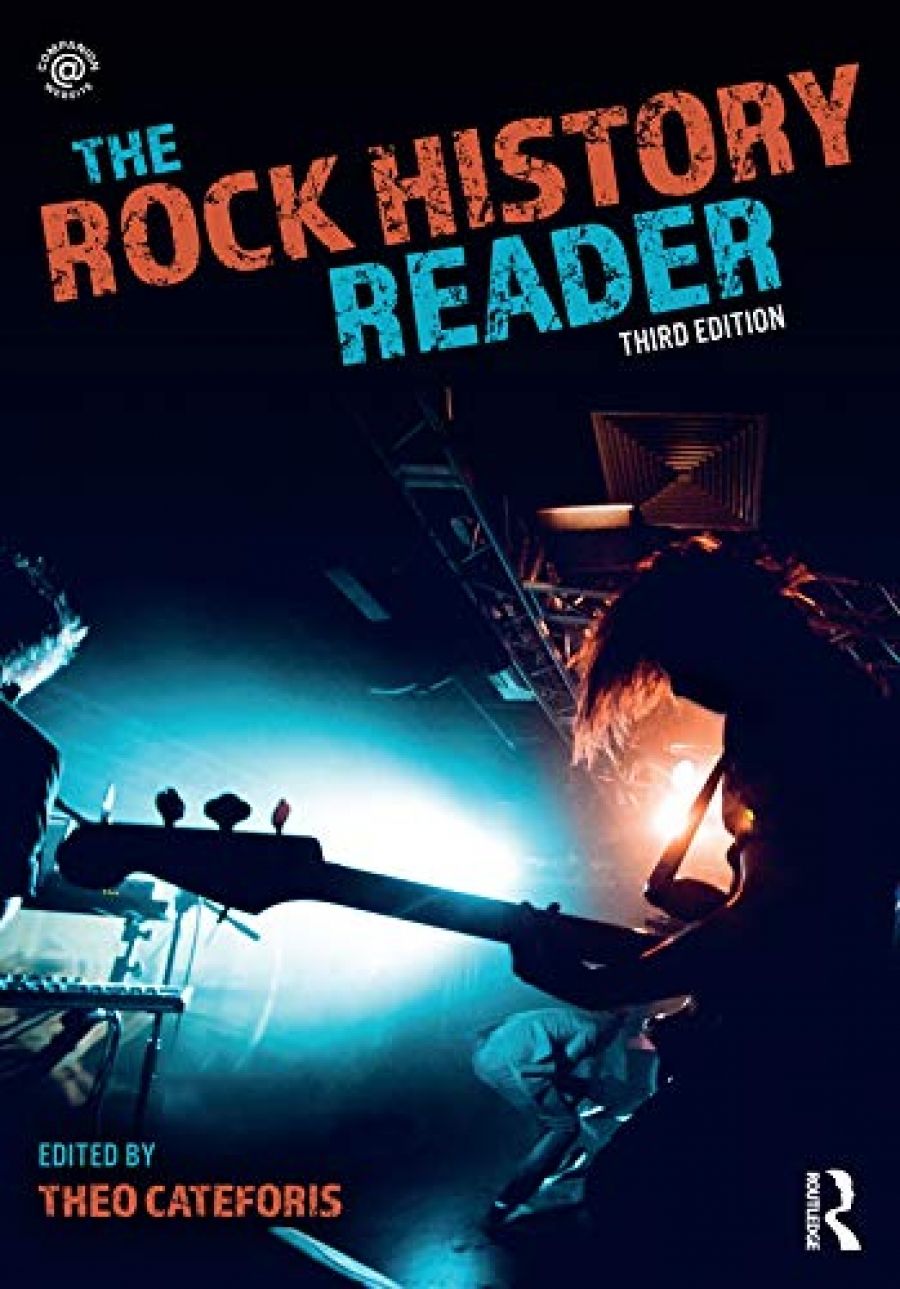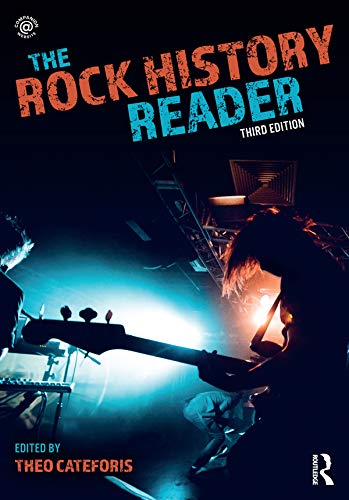
- Free Article: No
- Contents Category: Music
- Review Article: Yes
- Article Title: The bomp
- Online Only: No
- Custom Highlight Text:
Attempting to theorise or intellectualise rock‘n’roll, one could argue, is to miss the point. As Almost Famous’s egomaniac Stillwater vocalist Jeff Bebe put it, ‘I don’t think anyone can really explain rock‘n’roll – [except] maybe Pete Townsend’. In which case, Bebe would probably get a kick out of editor Theo Cateforis’s lovingly composed The Rock History Reader, which, unlike other publications in a similar vein, allows the theorising and intellectualising – the explaining – to nestle alongside autobiographical passages and personal anecdotes, providing a complex view of rock’s annals. If you didn’t already know who put the bomp in the bomp-a-bomp-a-bomp, you’ll probably find more than a few clues in this volume.
- Book 1 Title: The Rock History Reader
- Book 1 Biblio: Routledge, $63 pb, 360 pp
- Book 1 Cover Small (400 x 600):

- Book 1 Cover (800 x 1200):

It is clear from his conversational preface that Cateforis is aware both that the ‘music’ section of your average bookstore is already overflowing with rock history publications and that, when it comes to academic options, as far as collections of, as he puts it, ‘historically based readings’ are concerned, there is not so much a smorgasbord as a famine.
If Cateforis at first seems overly ambitious in seeking to address this imbalance by pitching The Rock History Reader as the little rock criticism anthology that could fill this gap, he is quick to add that ‘I cannot help but see The Reader as incomplete … even were this book twice its length, I would still be voicing the same apologies’. Incomplete it may be, but Cateforis has assembled a vibrant collection of writings that go some way towards capturing rock’s multi-faceted nature. This is due in no small part to Cateforis’s astute selection of articles. Although it is difficult to pinpoint many definitive pieces on rock‘n’roll, some come close, and it is pleasing to see them included in The Reader. Tom Wolfe’s new journalism paean to the acid ‘experience’, ‘The Electric Kool-Aid Acid Test’, is as colourful as ever, particularly impressive since Wolfe still maintains he never personally partook of ‘the test’. Lester Bangs’s wry, ‘choose-your-own-(record-review)-adventure’, ‘How To Be a Rock Critic’, is eerily prescient, as though he could already sense the tides of wannabe-Bangs that would later populate the music press, along with the cult of rock-snobbism that currently poisons so much indie writing.
Cateforis has obviously been careful not to flood The Reader with rock criticism’s old guard. Greil Marcus is notably (though not necessarily disappointingly) absent, as are Nik Cohn and Nick Kent (very disappointingly); Jaan Uhelszki’s ‘I Dreamed I Was Onstage With KISS In My Maidenform Bra’ would have been a valuable addition. But this is not rock criticism’s greatest hits, and The Reader’s remaining articles make this clear. At times, Cateforis’s choice of additional material is esoteric: Southern Rockers’ Molly Hatchet doing a Hit Parader magazine ‘Celebrity Rate A Record’ review with all the subtlety of a Confederate flag draped around a brick; Chuck Berry recalling his first hit, Maybellene (‘Chuck Berry: In His Own Words’). Rather than the same-old ‘gee whiz, aren’t the Beatles the best thing ever?’ opus, readers will enjoy reading the transcript of a 1964 press conference with the band, and producer George Martin (whose motor-mouth reminiscences were so memorably lampooned in the British comedy series Big Train), who speaks amiably about his experiences working with the Fab Four (‘George Martin: On The Beatles’). Instead of, say, Mark Blackwell and Nathaniel Wice’s ‘X-Rated Music’ (Spin, June 1990), there is ‘The Cult Of Violence’, an excerpt from Tipper Gore’s 1987 book, Raising PG Kids In An X-Rated Society. This very left-field quality is The Reader’s strength.
Some omissions are particularly glaring. Kim France’s ‘Feminism Amplified’ shines a spotlight on late 1990s female pop-rockers, though perhaps a piece on the ‘riot grrrl’ phenomenon might have been more valuable; anything from Caroline Coon’s fine 1988: The New Wave Punk Rock Explosion (1977) would have been more appropriate than Legs McNeil and Gillian McCain’s ‘Why Don’t We Call It Punk?’, an excerpt from Please Kill Me: The Uncensored Oral History Of Punk (1996), which is at pains to be seen as ‘definitive’.
Cateforis notes in his preface that many ‘rock history’ textbooks are in their fourth and fifth editions. The Rock History Reader will benefit from being expanded, perhaps into a series of anthologies. There are so many elements to rock‘n’roll that books of a similar length could be released on single genres, artists or even critical responses to individual songs. Considering the magnitude of such prospects, Theo Cateforis is to be commended for taking this first step.


Comments powered by CComment